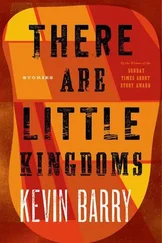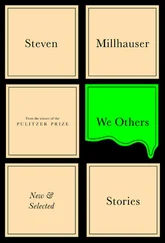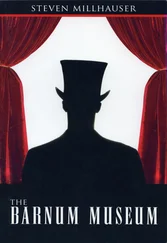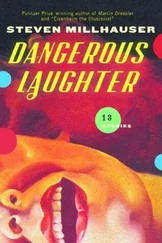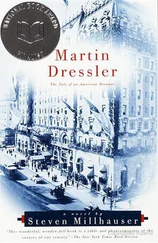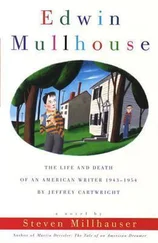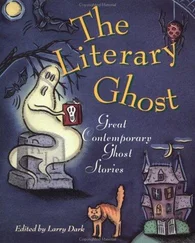On the morning after his moonlit escapade, shortly before eleven o’clock, as Franklin sat frowning down at his drawing board and slowly stroking his left temple with two fingers of his left hand, there was a sharp, quick rap at the door, which instantly swung open with a clatter of blinds.
“I met a man the other night,” Max Horn said, flinging himself into the faded armchair and stretching out his legs, “who asked me whether I considered myself an expressionist. He wasn’t kidding. Now what do you say to a guy in a silk tie who wants to know whether you consider yourself an expressionist? I told him I’d started out as an expressionist but dropped it at age sixteen. You look awful, by the way. So he blinks at me through his specs and asks whether I think the comic strip is the art of the future. There’s no stopping this gent. I tell him the art of the future is the American billboard. He asks me what exactly I mean by that. I invent a theory on the spot, dragging in cave art and primitive masks. Finally I can’t take it anymore and try to beat a retreat. He grabs my arm and hands me his card — J. Bateson: Bathroom Accessories. I saw the light, Franklin. The American bathroom and the avant garde walking hand in hand into the future. Cubist paintings on shower curtains, free verse printed on rolls of toilet paper in violet ink. An expressionist in every tub. I’ll be there around one.”
“Good,” Franklin said. “I’ll meet you at the station.”
“Later it struck me Bateson might be right. The art of the future is American art, and what is American art? I’ll tell you what it is. American art is efficient art — quick art. We’re busy, we want something that doesn’t take up too much time, something we can throw out. The art of the future is throwaway art: the comic strip, ads for Cracker Jack, the architecture of the tin can.”
“You missed your calling, Max.”
“You bet your sweet life I did. I should’ve been an adman. Brush your teeth with Zippo and you’ll never grow old. Do you know what my father did for a living? He sold coal. When I was a kid he talked to me about the virtues of anthracite. So what did I do? I took pieces of soft coal and drew pictures on brick walls. Story of my life. The Troll’s been hounding me again.”
“You know how he is,” Franklin said. “He’ll get over it.”
“Says my work hasn’t been up to the mark. I like that: up to the mark. What mark? Whose mark? I’d rather sell bathtubs for J. Bateson. Drawing for the funny papers. Is this a life? I’ll see you on Saturday.”
When Max left in a rattle of blinds, Franklin lowered his eyes to the slanted drawing board and continued rough-sketching the third panel of a strip, in which a monkey in baggy pants was hanging from the top of the frame.
Because the Cincinnati Daily Crier held the copyright to “Dime Museum Dreams,” Franklin had been forced to draw the strip for the World Citizen under a new title, while the original strip continued appearing in the Daily Crier under the original title, though drawn by a different artist. The unsatisfactory new name (“Danny in the Dime Museum”), the sense that he was duplicating a strip appearing elsewhere, the need to distinguish his new strip from his old one while keeping it the same, all this constricted Franklin’s imagination and seemed boring and worthless, so that he had begun to introduce new settings while keeping the invariable format: Danny at the Circus, Danny at the Bronx Zoo, Danny in Central Park. But these variations, though at first they amused him, failed to excite his deepest attention, and in searching for new ideas he had suddenly invented two entirely new strips.
The first one, called “Phantom of the City,” grew directly out of the unsatisfactory Danny series and permitted Franklin to express his detailed love for his new city while at the same time it gave his imagination fuller rein. The eight-panel strip was less rigid in format than “Danny in the Dime Museum,” which ceased appearing within a month, though the new strip followed a definite pattern in its black-and-white daily version and later in Sunday color. The Phantom, a mysterious stranger from a distant city who had ghostlike powers, penetrated a new place in each strip: the halls of Egyptian antiquities in the Metropolitan Museum at midnight, the tunnels under Grand Central Station, a loft in a shirtwaist factory where pale women sat at receding rows of sewing machine tables, the helical stairway leading to the crown of the Statue of Liberty, a smoky Bowery saloon; each time he discovered someone who was suffering and who expressed a wish, which the Phantom instantly granted. What excited Franklin wasn’t the crude fairy tale but the elaborately drawn settings for each strip. He visited each place with sketchpad in hand, recording impressions, noting odd perspectives, rapidly copying bridge piers with their patterns of reflected light, cast-iron lampposts decorated with iron leaves, gigantic bells in bell towers, the underside of the Second Avenue el, the ceilings of movie palaces, the structure of elevator cables and subway straps, the views of receding avenues from the top floors of mid-town hotels. His hymn to the city, in panels of rich, meticulous detail, combined with a mystery phantom and an invariable happy ending, struck a responsive chord; readers were enchanted, and sales of the World Citizen notably increased.
The second strip, which sprang into his mind within days of “Phantom of the City,” though it took much longer to assume a workable shape, was so different that Franklin wondered whether he was two people — two people who shared the same house, exchanged amicable remarks at breakfast, and departed down two different streets ending in mist. If the Phantom strip emphasized precision of detail, including carefully drawn perspective views, and required Franklin to walk out into the city with sketchbook in hand, the second strip rejected the very notion of realistic settings and insisted on its own artifice. It took the form of a six-panel Sunday strip called “Figaro’s Follies,” and week after week it was a variation on a single theme: the frame of the panel was drawn into the adventure of the strip’s only character, a sinister but smiling little monkey dressed in baggy pants and a jacket with big buttons. In the first panel of the first strip, Figaro was shown in jail. In the next four panels, the monkey sawed through the frame of the panel and escaped; in the last panel, he stood on top of the cartoon frame. In another strip, Figaro used the frame as a jungle gym; in another, he drew the sides of successive panels closer and closer together, until in the sixth panel he was thin as a pencil. In Franklin’s favorite of the series, the monkey opened a door in each panel and entered a new panel with a different shape: the first panel led into a circle, the circle led to a tall, thin tube, the tube opened onto a stairway, the stairway led to a small box, and a door in the box opened to a hot-air balloon with a basket, in which the monkey stood with a spyglass trained on the reader.
Although “Figaro’s Follies” was less successful than “Phantom of the City,” Franklin knew that each one drew its strength from the other. For when he had labored over the view of a pier of Brooklyn Bridge as seen from a barge passing beneath the bridge, and checked his drawing by standing in a coal barge and observing the structure of shadows and the play of water-reflected light on stone, then he felt the need to escape from the constriction of physical things into a world entirely of his own devising; but when he had entered a world of four black lines, which he broke apart and reassembled in any way he liked, so that his impish monkey seemed the very expression of his longing to break free of some inner constraint, then he felt a craving for the lines and shadows of the actual world, as if the imaginary world threatened to carry him off in a hot-air balloon on a voyage from which he might never return.
Читать дальше



